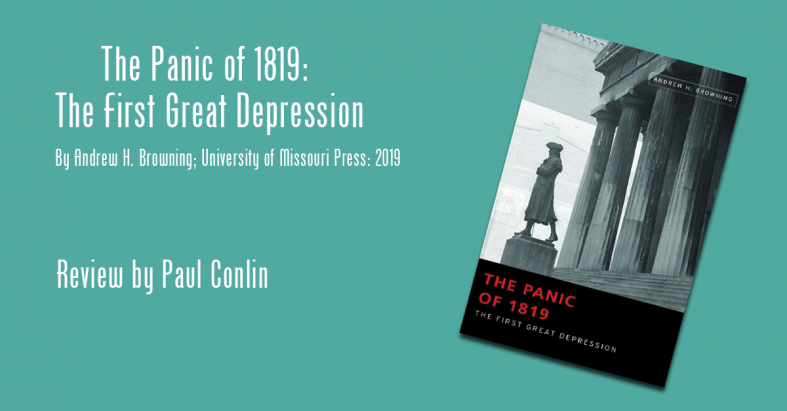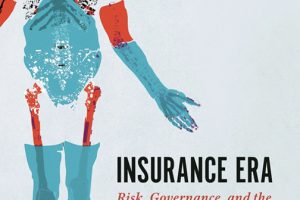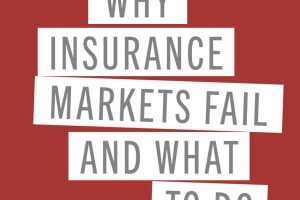Review by Paul Conlin
During the course of the 19th century, the U.S. economy suffered financial panics, followed by long, deep, full-blown industrial and/or agricultural depressions, in 1819, 1837, 1857, 1873, and 1893. Think about that for a minute. If you were born during any one of those panics, you had barely reached adulthood, even by the accelerated standards of the time, before you were buffeted by the next economic tsunami. To paraphrase the author of this brilliant and timely book, it’s not that people forgot the lessons of their folly; they never learned them in the first place.
This year marks the bicentennial of the first of those calamities, the Panic of 1819. Even though modern macroeconomic statistics did not exist at the time, the ensuing damage was known at the time, and is known today, to have been enormous. The cities of Pittsburgh and Philadelphia are each believed to have experienced 50% unemployment. Half the businesses in St. Louis, Mo., closed, and one-third of the people left. Prices of core commodities like cotton, grain, and wheat cratered—a calamitous outcome in an era of gentleman-farmers.
As has become familiar for those of us living in the shadow of the Financial Crisis of 2008, Browning (an amateur historian—my favorite kind!—as best I can tell from the book jacket) begins with the boom before the bust. Except in that case, it was a surprisingly short boom. The world, and the United States, had just lived through the long disruption of the Napoleonic Wars of 1793 to 1815. Britain and France had lobbed economic embargoes at each other, and the United States—militarily not yet a match for either—responded by picking up its marbles and refusing to play at all. When relief came at last in 1815, Americans were able to resume moving west into the frontier country of Indiana, Illinois, Michigan, Missouri, Alabama, Mississippi, and Louisiana. President Jefferson had brilliantly bought the territory west of those new states, the Louisiana Territory, for four cents an acre during the peak of the war, but he had done so with debt, which was coming due, payable in gold and silver. This was a built-in deflationary time bomb embedded in the world financial system. Another was the decommissioned soldiers and sailors returning home to the industrial, financial, economic center of the universe of the time, Great Britain. Those soldiers and sailors struggled to find gainful employment, so Parliament responded by enacting a ban on the import of grain, an event which would reverberate (again) in the 1846 Great Irish Famine, yet another episode that would change the course of American history.
But that was still a generation in the future; the 1819 impact was that all those new Midwest and Southeast American farmers abruptly lost an export market and had no way to pay back their newly incurred debts and mortgages. We all know (don’t we, fellow early 21st actuaries?) what happens when mortgage defaults increase. And, finally we come to the quasi-public, quasi-central bank of the time, the Second Bank of the United States. The first one had been chartered by Congress in 1791 for 20 years and was allowed to lapse in 1811. The second one was rechartered, for a second 20-year term, in 1816. It was given just enough power to prime the pump with reckless loans from 1816 to 1818, but not enough to come to the rescue when the music stopped playing in 1819. The bank opened a second office in Cincinnati just to process the volume of foreclosures it needed to handle. As with the pre-1933 Federal Reserve, the central bank of the time reinforced the business cycle, or at least the monetary expansion and contraction, rather than serving as a counterweight to it.
Still, though, no ant-and-the-grasshopper fable to see here, at least not by my reckoning. Such a short, boring party, leading to such a painful hangover. What gives? And, more importantly, why do we care, 200 years after the fact?
The reason why we should care, in my opinion, is the political impact. Many of the political events in this country seem incomprehensible to us political junkies who cut our teeth watching genteel statesmen sit side by side and politely debate the issues of the time on the McNeil-Lehrer Newshour. Jeepers, how we gasped in 1976 when Bob Dole accused Walter Mondale on live TV of wanting to have more Democratic wars, and again in 1988 when Lloyd Bentsen told Dan Quayle—to his face!—that he was no Jack Kennedy. Today, a single Tweet contains, and generates, more outrage than I felt in an entire childhood and young adulthood combined.
So, what happened? Where did the “Good Times” go? How did we lose what we had? Social media, of course, is part of the answer. But I don’t believe it’s all of it. I place much of the blame on the Financial Crisis of 2008, the subsequent Great Recession, and the political fault lines it opened. Browning’s book holds up a distant mirror, and allows us to see what happened to our politics in the aftermath of 1819.
Now, the biggest difference first. “It’s the economy, stupid” hadn’t been invented yet, apparently. James Monroe was in office in 1819, and waltzed to an uncontested re-election (the last in American history) in 1820. He paid no political or electoral price for the economic dislocations of his times.
 But his Cabinet wasted no time jostling to be his successor. His secretary of state, John Quincy Adams, was, by virtue of the tradition of the office he held, his heir apparent. But Monroe’s treasury secretary, William Crawford, and his war secretary, John C. Calhoun, had their elbows sharpened, aiming for 1824. And two outsiders, Speaker of the House Henry Clay and Battle of New Orleans hero Andrew Jackson would have a say (the latter two, in fact, would arguably dominate American politics for the remaining years leading up to the Civil War). Today’s battle royal of 23 declared Democratic candidates is considered a huge field; but in a nation of 9 million in 1819, very few of whom could vote, the current Democratic battle is downright orderly by comparison. Crawford is one of the great forgotten figures of American history, coming in the top three by the time electoral votes were cast in 1824, denying both Adams and Jackson a majority, and sending the presidential election to the U.S. House of Representatives, despite being on his deathbed with a stroke. Browning does a terrific job of resuscitating Crawford, showing the role he played as treasury secretary during the crisis, and then as presidential hopeful in 1824. Adams won in 1824, but Jackson had the last laugh, getting revenge in the 1828 election, ushering out the Era of Good Feeling in American politics and building in its wake the Democratic Party (and patronage, and partisanship, and machine politics, and other good stuff), which survives to this day.
But his Cabinet wasted no time jostling to be his successor. His secretary of state, John Quincy Adams, was, by virtue of the tradition of the office he held, his heir apparent. But Monroe’s treasury secretary, William Crawford, and his war secretary, John C. Calhoun, had their elbows sharpened, aiming for 1824. And two outsiders, Speaker of the House Henry Clay and Battle of New Orleans hero Andrew Jackson would have a say (the latter two, in fact, would arguably dominate American politics for the remaining years leading up to the Civil War). Today’s battle royal of 23 declared Democratic candidates is considered a huge field; but in a nation of 9 million in 1819, very few of whom could vote, the current Democratic battle is downright orderly by comparison. Crawford is one of the great forgotten figures of American history, coming in the top three by the time electoral votes were cast in 1824, denying both Adams and Jackson a majority, and sending the presidential election to the U.S. House of Representatives, despite being on his deathbed with a stroke. Browning does a terrific job of resuscitating Crawford, showing the role he played as treasury secretary during the crisis, and then as presidential hopeful in 1824. Adams won in 1824, but Jackson had the last laugh, getting revenge in the 1828 election, ushering out the Era of Good Feeling in American politics and building in its wake the Democratic Party (and patronage, and partisanship, and machine politics, and other good stuff), which survives to this day.
So, there it is. My lesson from 1819, and my lesson from 2008. Financial panics and economic depressions come, and they end, and then they come again. None of them are exactly the same as the other, but they do all rhyme. And what matters most in the end is that they usher in political changes, and political actors who would have been heretofore unimaginable. Unimaginable to those of us who grew up in the prelude to the crisis, but par for the course—the New Normal, if you will—for the generation who grew up during the crisis. And then the cycle repeats itself. Boom. Bust. Regeneration. Thesis. Antithesis. Synthesis. D.H. Lawrence once wrote that the calamity has already happened—we’re just living in the wreckage. He wrote it after living through World War I … on the winning side.
So, turn off Fox News, turn off CNN, turn off Twitter for three nights this week. Curl up with a good book about a bad time—The Panic of 1819. You won’t regret it. And the world will still be standing when you put the book down—it will just be three days closer to the next crisis.
Besides the political conclusions I derived from reading this book, two other areas piqued my interest. The first is on the environmental front. Two world-altering natural calamities occurred during the run-up to the 1819 financial panic. The first was an 1811 violent earthquake in the Southeast Missouri area that made the Mississippi River flow backwards for days. The death toll would have been staggering if not for the sparse population density of the area at the time. But to compensate the victims, the U.S. government allowed land claims to the farmers, which came due just as the financial panic was rolling its way westward. The second natural disaster was an 1816 earthquake in Southeast Asia, in the area of, but even more powerful than, the famous 1883 Krakatoa eruption. The 1816 blast spewed so much ash into the atmosphere that harvests around the world failed, giving false price signals to the world grain markets and introducing oversupply just as the economy suffered the effects of the 1819 financial failure.
The second interesting side effect was the failure of the United States federal government to mint its own currency from its founding in 1776 until the Civil War in 1862, despite the Constitution explicitly giving it the exclusive right to do so. Instead, the circulating “cash” in the U.S. during this nearly-century-long interval was private bank notes, which often traded at a discount to their face value. It remains a mystery, albeit a pleasant one, that the U.S. economy developed so rapidly, in spite of (perhaps because of?) a primitive monetary system.
PAUL CONLIN, MAAA, FSA, is a Senior Actuarial Director at Aetna, a CVS Health company; and works at home from Lake Zurich, Ill.





